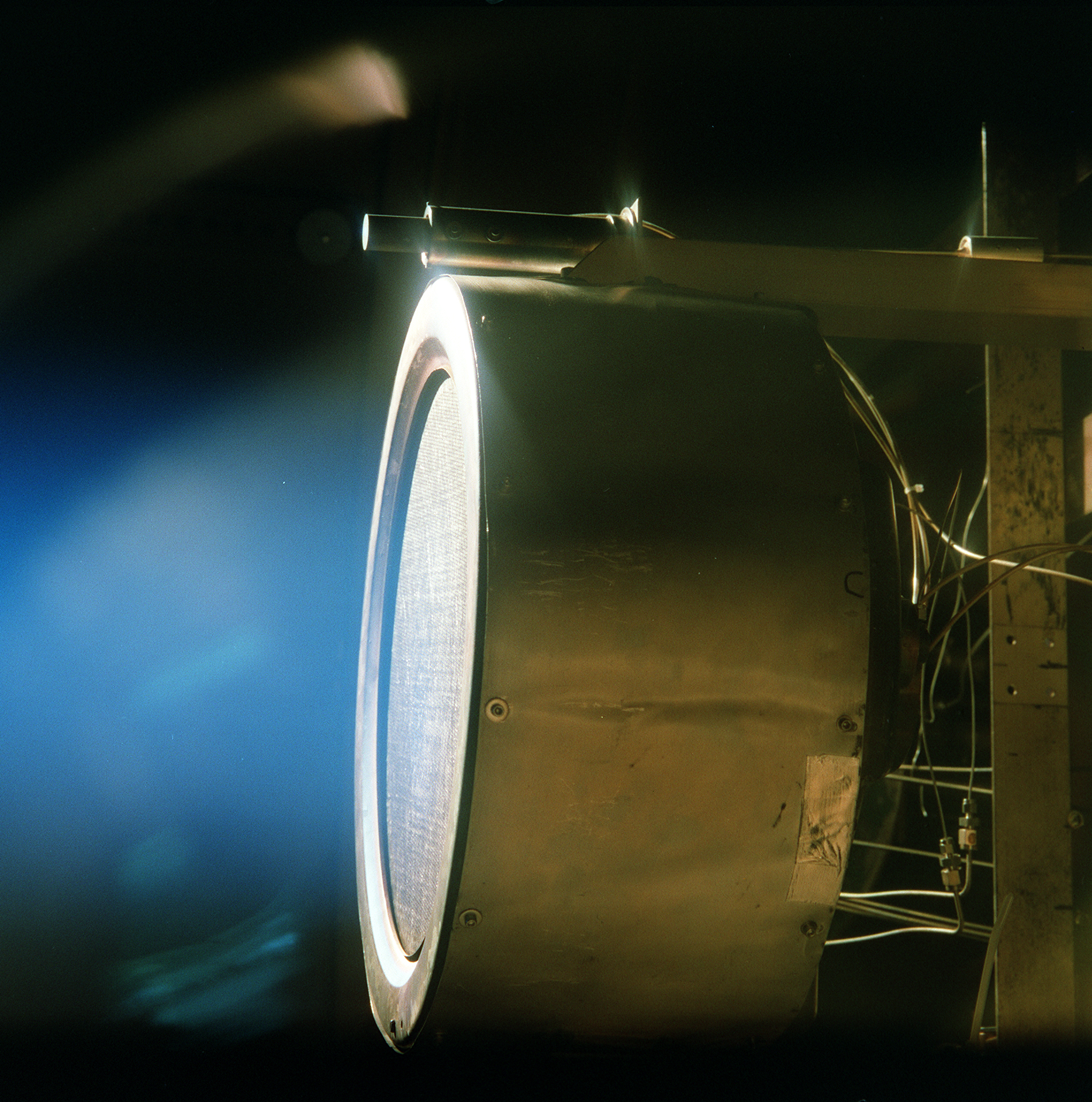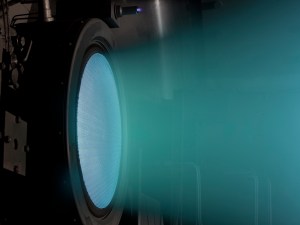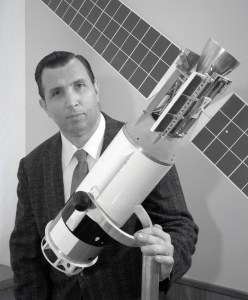On December 18, 2001, NASA engineers shut down Deep Space 1, bringing to an end the first U.S. space mission utilizing ion thrusters as its primary mode of propulsion. Researchers at Lewis Research Center (now NASA Glenn) made significant contributions to the solar-powered xenon-gas-based electric propulsion system, referred to as the NASA Solar Electric Propulsion Technology Application Readiness (NSTAR). The engine’s roots go back to the original electron bombardment thruster that Lewis researcher Harold Kaufman invented in the late 1950s.
In 1992 Lewis and the Jet Propulsion Laboratory (JPL) began collaborating on a 30-cm diameter NSTAR to propel future long duration space missions. Lewis had been designing and testing 30-cm thrusters for over 20 years.
In 1996 and 1997, a Lewis prototype NSTAR thruster operated for over 8,000 hours in simulated space conditions. NASA then contracted industry partners to fabricate a flight engine based on the Lewis design. JPL devised the Deep Space 1 mission specifically to validate 12 new technologies—including the NSTAR thruster and power-processing unit for the solar concentrator arrays.
Deep Space 1 was launched into space on October 24, 1998, and the NSTAR thruster was activated 30 days later. The ion engine and other new technologies were successfully demonstrated during the first 90 days. After reaching its target, the Braille asteroid, engineers decided to extend the mission. Deep Space 1 encountered its secondary target, the Borelly comet, in September 2001. Final tests were conducted afterward, and the mission was successfully completed in December.
The NSTAR system operated for 16,246 hours, the longest in-space operation of an ion engine and produced the greatest advancement in spacecraft velocity to date. In 2007, the NSTAR propulsion system was also utilized on JPL’s 2007 Dawn mission.
Today, we are testing NASA’s Evolutionary Xenon Thruster – Commercial (NEXT-C), a powerful next-generation solar electric propulsion system that could propel future long-duration science missions.
Top Image: Illustration of the Deep Space 1 spacecraft, which successfully tested 12 new technologies, including an ion propulsion system developed at NASA Glenn. Credits: NASA
Robert S. Arrighi
NASA Glenn Research Center


































